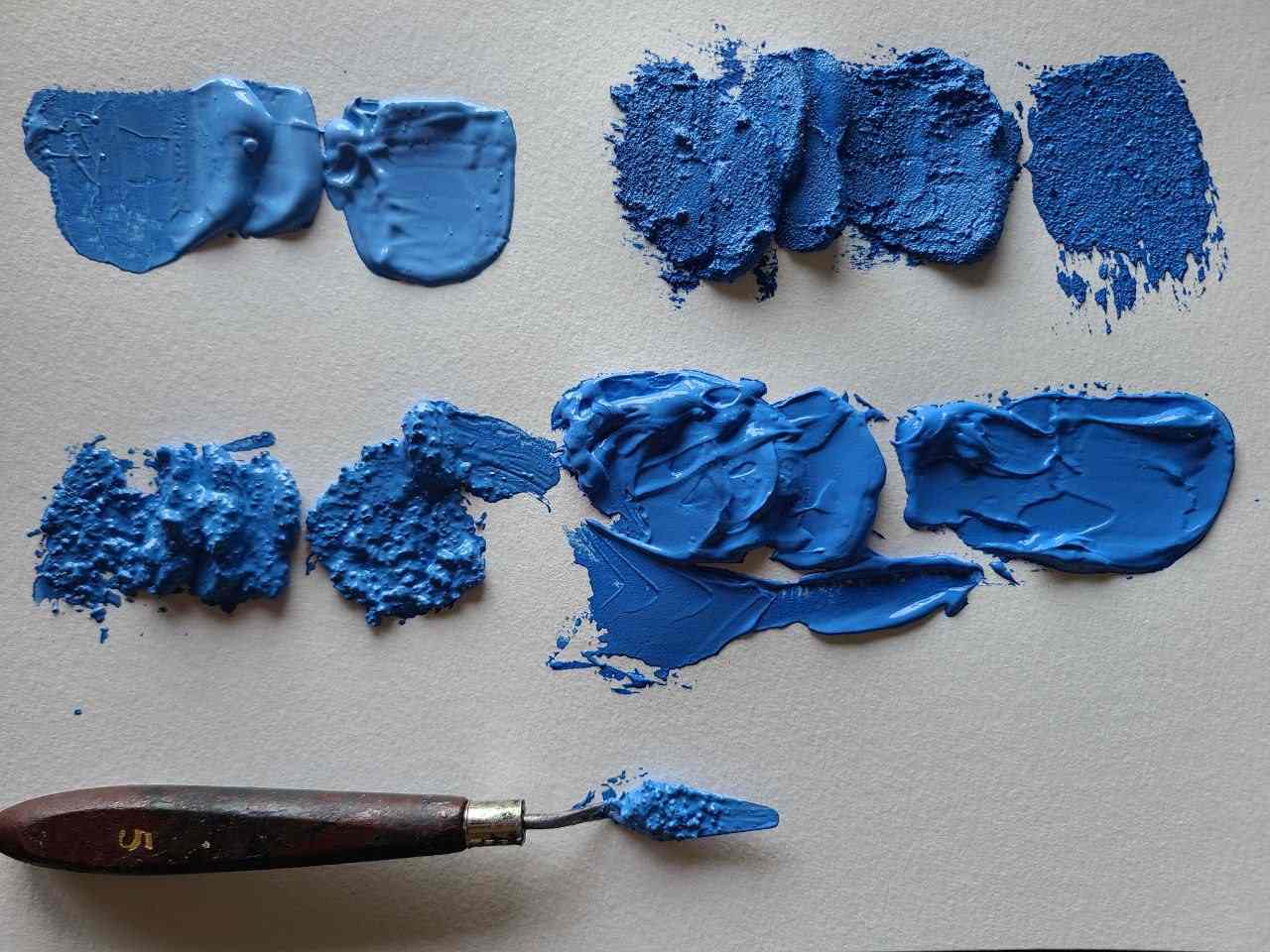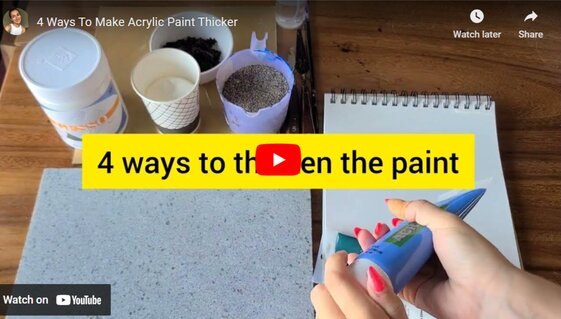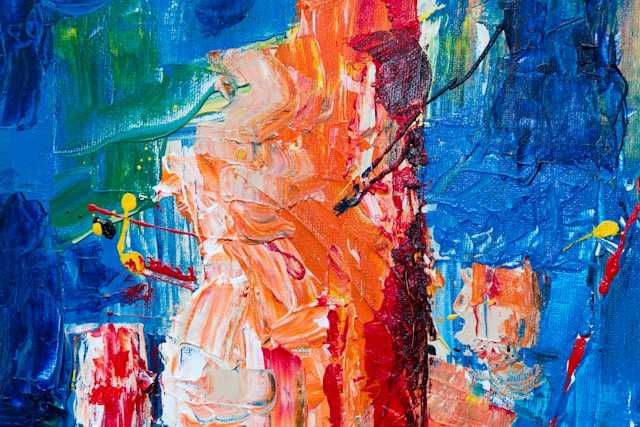Last Updated on April 20, 2024 by Masha Eretnova
Would you like to create thick, textured, expressive acrylic paintings? I’ve been creating textured ad impasto art since 2020 and I can share how I thicken my paint with professional and household items.
If you need thickness and texture use heavy-body or ultra-thick acrylics like Gaffrey. If you have thin acrylic paint, add modeling paste, acrylic gel or sand, baking soda, PVA glue, talc, sand, cornstarch, and even coffee to thicken it.
Why make acrylic paints thicker?
It is typical for acrylic paint to have a thick, so-called heavy-body, consistency.
A thick consistency allows the acrylic paint to be spread easily and efficient blending of colors.
The main reason why artists want to thicken their acrylic paint is that they want a specific texture, depth, or effect for their artwork.
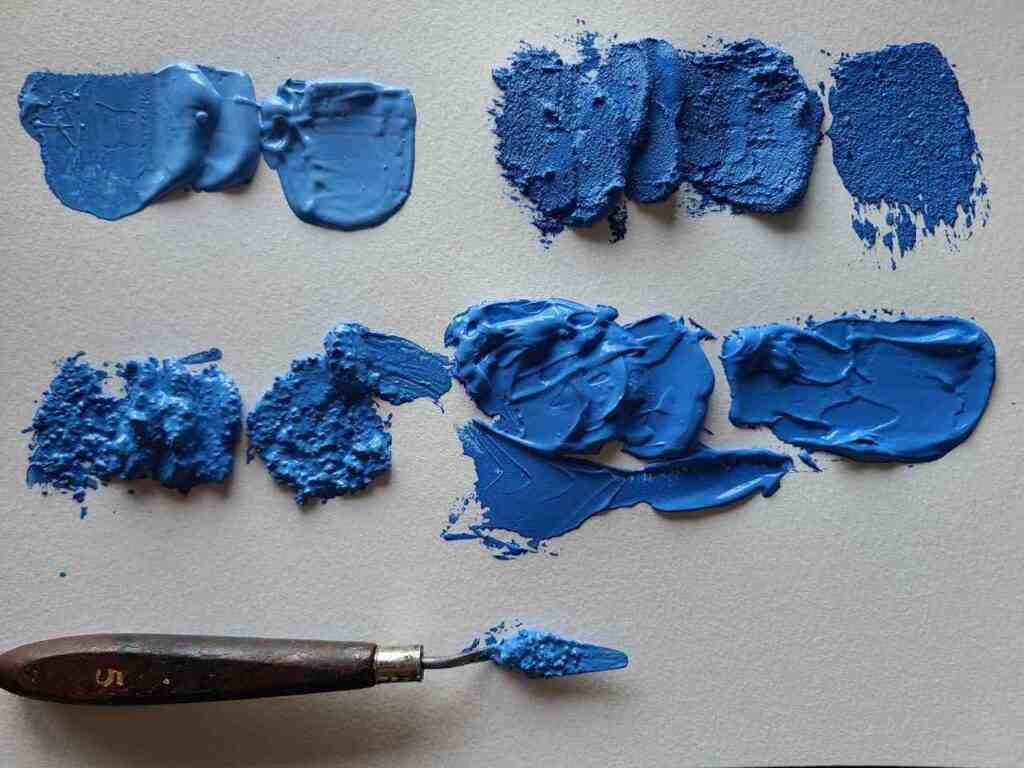
Use Ultra Thick Acrylic Paint – Gaffrey
The thickest acrylic paint on the market is Gaffrey paint – it is really 3D and is probably 10 times thicker than any heavy-body acrylic paint.
You can only buy it directly through their website. I guarantee you haven’t seen anything like this paint.
Thicken Acrylic Paint at Home
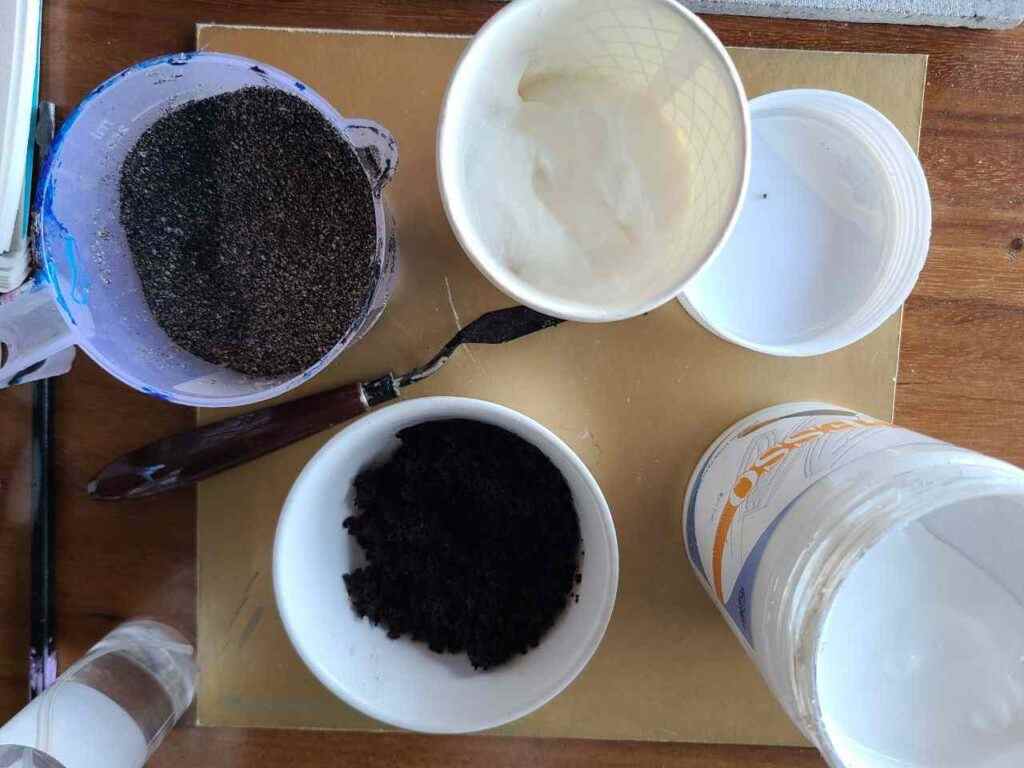
You can thicken acrylic paint by using common household to make DIY thickening gel in the comforts of your own home, such as
- Flour
- Cornstarch
- Coffee
- Sand
- Baking soda
- PVA glue
- Joint compound
- Talcum powder
- Diatomaceous Earth
- Baby Powder
- Gelatin
- Pectin
*sand is my favorite 😍
If you are a beginner and still experimenting, you can make your own DIY paint thickener with any of the above.
However, being too frugal may have long-term effects. DIY acrylic paint thickeners (containing non-traditional additives) can eventually decay. You may notice the change in paint color and texture.
DIY pastes can cause small lumps and create more brush strokes.
Paint + Joint Compound
A joint compound can be an inexpensive alternative acrylic paint thickener. This is available in most hardware stores across the globe.
It mixes well with paint and dries fast. However, it tends to crack and lighten the color when used on canvas.
Paint + Pva Glue
If you are looking for a quick fix and you want to thicken your acrylic paint ASAP, you can rely on PVA glue and talcum powder to do the trick.
Here I used acrylic paint and regular glue and it became very thick:
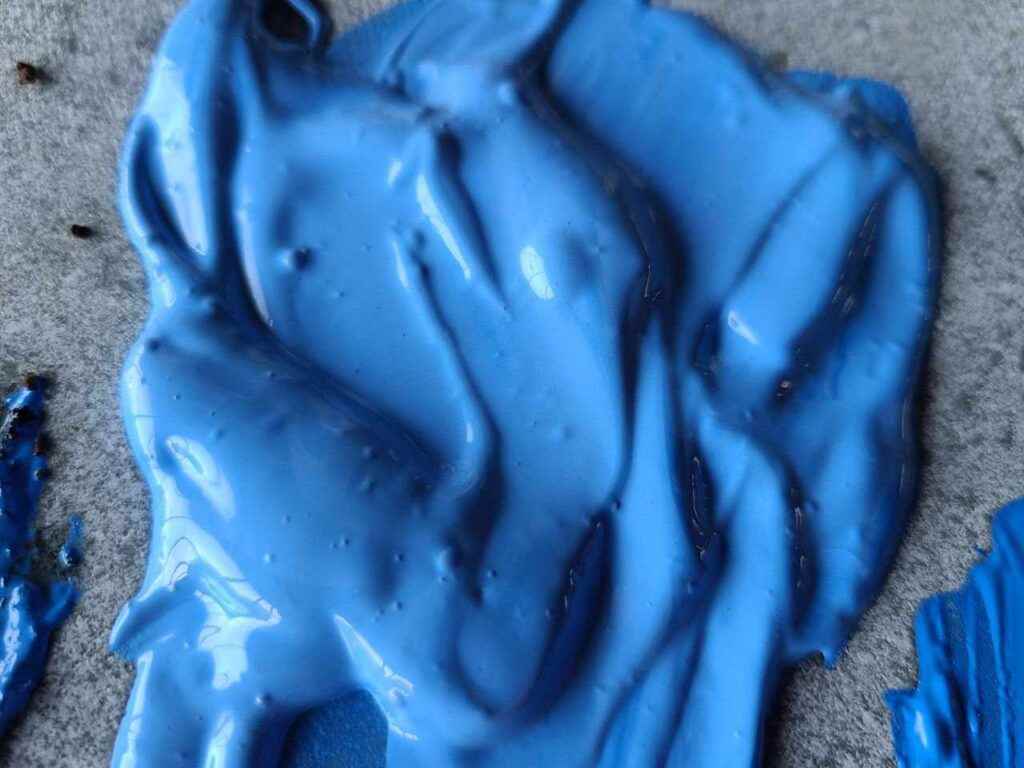
The downside of using glue to thicken acrylic paint is that when it dries it doesn’t stay firm – it looks like an empty bubble and you can sort of squeeze it.
There was no color shift though, which is good.
Acrylic + Talcum
If you want to use talcum powder, combine glue, talcum powder, and acrylic paint in a mixing bowl with an initial ratio of 1:1:1. The more talcum powder you add to the mix, the thicker the paste will be.
Using talcum powder creates a semi-matte finish.
Talcum powder can be a better thickening agent when it is paired with PVA glue.
What I dislike about talcum: it dulls the colors and tends to crumble if you add too much talcum.
Paint + Coffee
Coffee grounds will make the acrylic paint look very textured, grainy, and heavy.
Make sure to fully dry the coffee before mixing it with the paint to make sure you are not mixing all the coffee oils into the paint. Otherwise, oils will escape and bleed through paper or canvas.
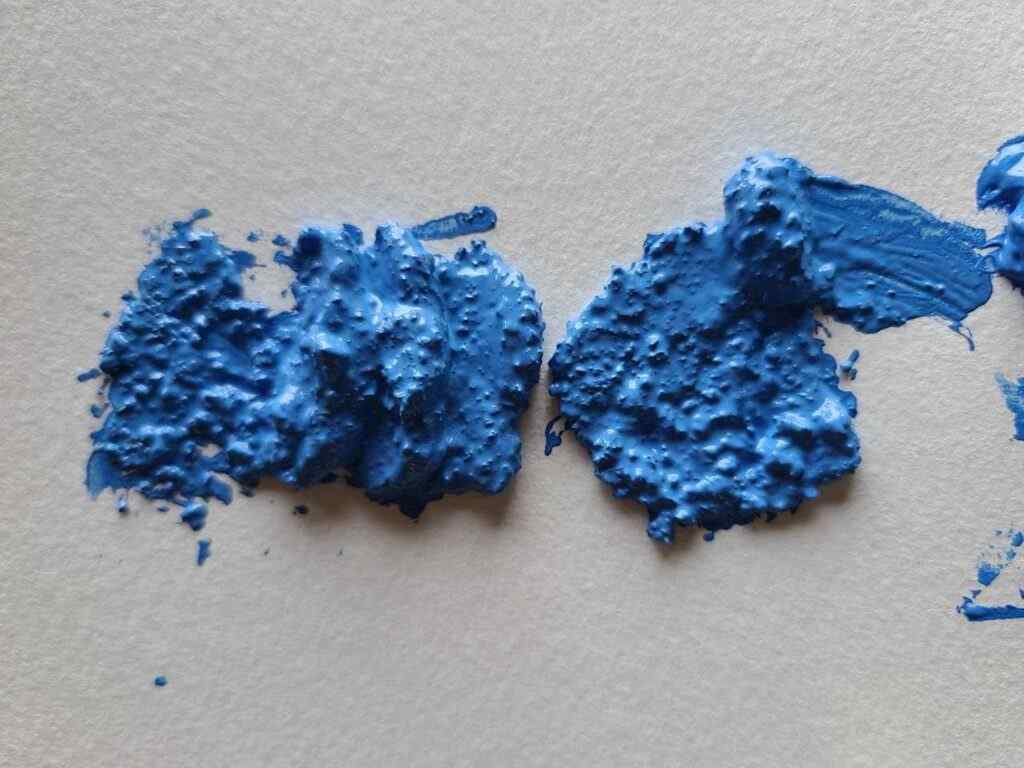
I’ve tried it and the texture was very coarse, the paint dried fast without color changes.
I’d use it for coarse beach texture, soil and when you want a very distinctive “feel” and touch to your work.
Acrylic Paint + Baking Soda
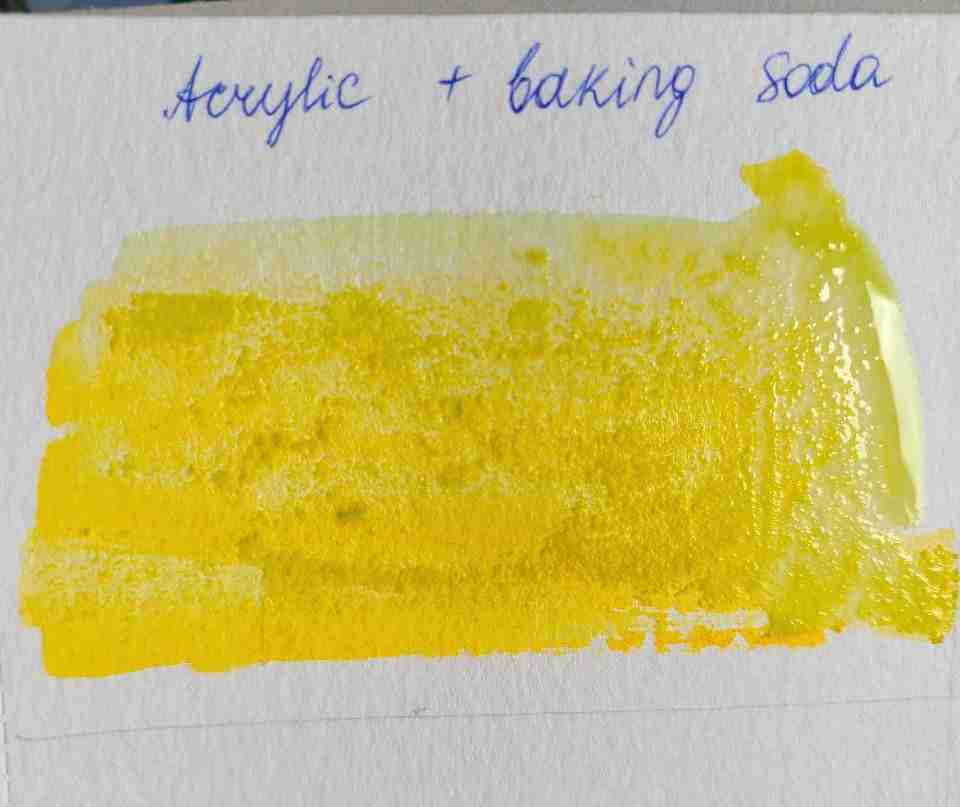
Baking soda can be used to thicken acrylic paint and create a very mild texture.
However, adding baking soda to acrylic paint can make the paint dull.
Avoid using baking soda as a DIY paint thickener if you are planning to paint miniatures or artworks that demand a glossy finish.
Acrylic Paint + Flour
If you are looking for a plant-based and affordable alternative to commercial acrylic paint thickeners, flour is your best bet.
Flour is also used to make paper mache.
When you use flour, it produces an almost similar effect when you use thickening gels for acrylic paint.
Directions:
- In a cooking pot, mix water and flour (ratio of 2:3) and let the mixture heat up until you achieve a thick consistency.
- Continually stir the mixture.
- If the mixture is not thick enough for you, you can continue adding more flour. If you are satisfied with your paste, turn off the heat and let the paste cool down.
- Once cooled, you may gradually add the paste to your acrylic paint.
- You can store the excess paste in an airtight container and place it in a cool and dry place.
*DIY mixes normally don’t last long so plan to use it within a week or two.
A disadvantage of using flour as a paint thickener can make the paint lumpy if you don’t mix the ingredients well. Also, flour tends to have a gummy texture because of the activated gluten.
It can also eventually flake, crack, and become brittle over time.
To avoid gummy texture and other issues when flour, use gluten-free flour.
Adding Cornstarch
Like flour, cornstarch is also plant-based, eco-friendly, and a cheap alternative for thickening acrylic paint.
Just like cornstarch is used to thicken your soup or gravy in the kitchen, it can make your acrylics thicker.
However, as a word of caution from me, there are disadvantages when using cornstarch in your acrylic paint:
- risk of molds or mildew.
To reduce the possibility of mildew growth, it is mandatory to varnish the painting.
- gooey effect which can be very challenging when you mix or blend colors.
- Cornstarch can also affect the water-resistant ability of acrylic paint.
Directions:
- Heat up 2 cups of water and 3 tbsp of cornstarch
- Stir until desired consistency and let it cool
- Add to the acrylic paint.
*Cornstarch is actually one of the ingredients for homemade gesso as well!
Using Diatomaceous Earth
Diatomaceous earth is an inexpensive choice for acrylic paint thickener that is resistant to cracking and can create a uniform sheen to your artwork.
It is also a good matting agent for a glossy finish.
You can initially create a small mixture of the diatomaceous earth (¼ cup) with water (2 tbsp) and acrylic paint (½ cup).
Keep mixing thoroughly until you have reached your desired consistency.
The main downside of using diatomaceous earth is the risk of irritation from your respiratory system, eyes, and skin.
Baby Powder
Baby powder can alternatively be used as an acrylic paint thickener. Mix 2 tbsp of baby powder with 1 cup of acrylic paint in a bowl, add water to dilute the paste if it is too thick.
Gelatin / Pectin
You can add 2 tbsp of gelatin or pectin to 1 cup of acrylic paint, stir, and let it sit for 15 minutes. This paste will act like thick paint.
Note: Expect the mixture to be a bit sticky to use.
Sand + Acrylic Paint
I got absolutely regular sand from our beach and mixed it with paint.
Amazing results! If you are looking not just for thickness but also texture, I think sand gives one of the most beautiful, natural, very nice-to-touch textures.
See for yourself:
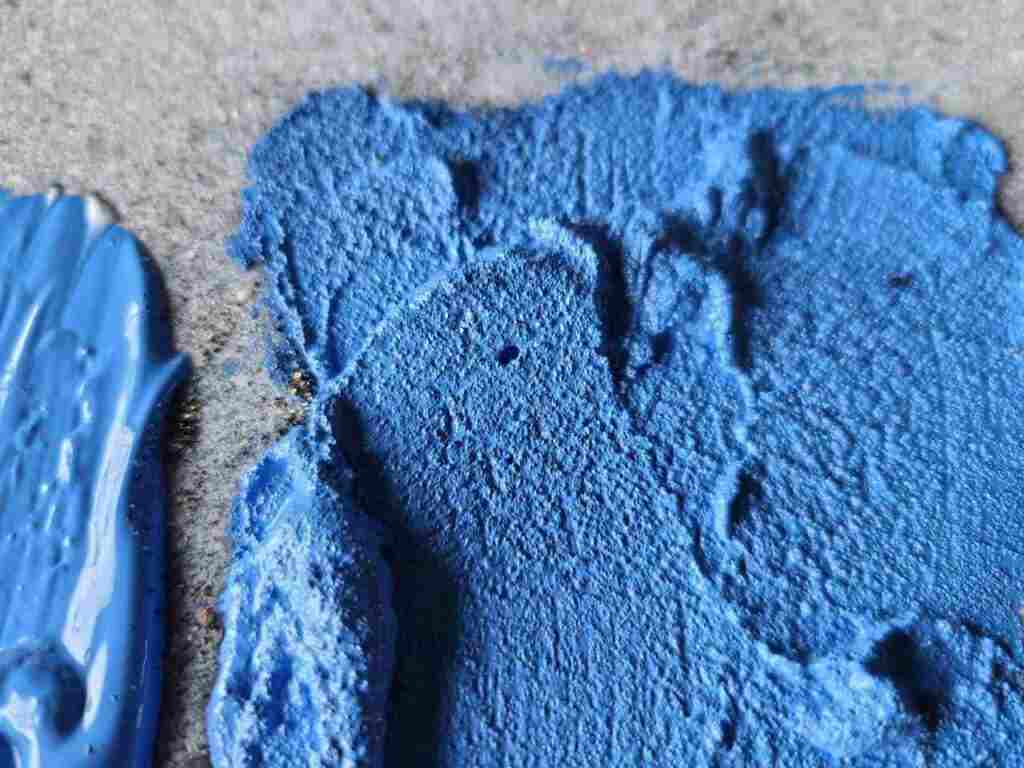
Dried on paper it looks amazing, with no color shifting, and no peeling.
Sand with acrylics is in the left lower corner.
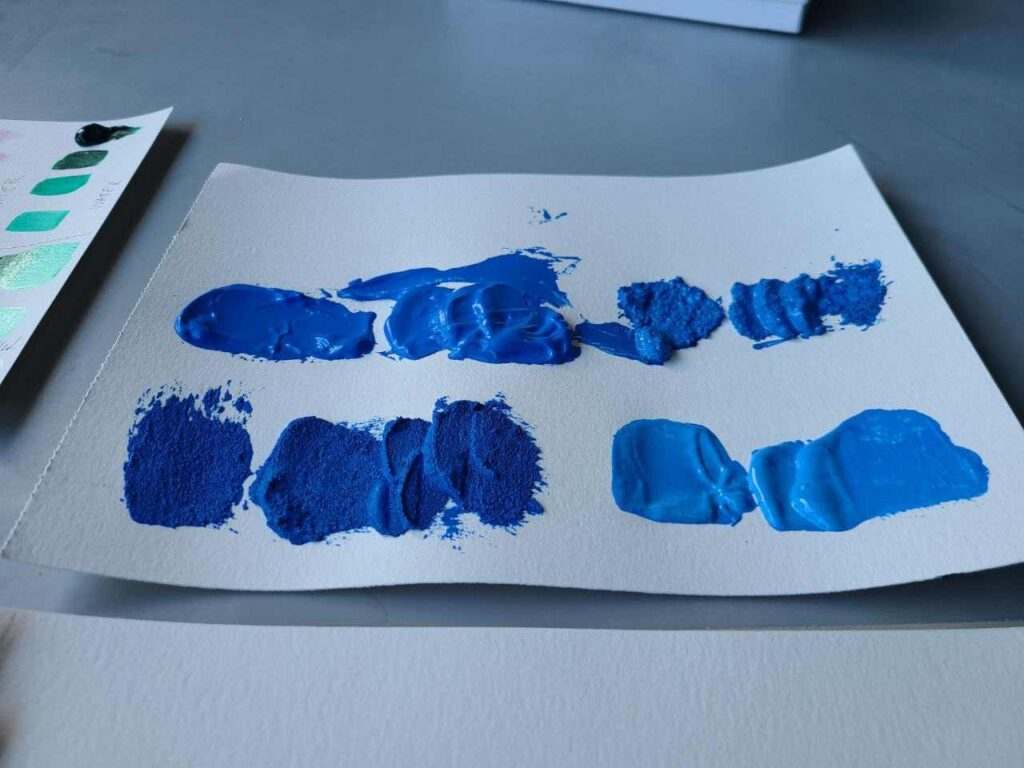
Professional products to thicken acrylic paint for impasto
The impasto technique is an expressive painting technique where the paint is applied on the canvas thickly.
You will be able to notice the brush or palette knife strokes because of the thick paint.
- Gel Medium – Heavy body paint gels mixed with acrylic paint can thicken it. With much thicker paint, you can expect richer and thicker textures with every brushstroke. Gel mediums can be glossy or matte. I use this matte acrylic gel medium. Doesn’t reduce color vibrancy and extends drying time.
- Heavy or extra-heavy acrylic gels are thicker than gel mediums, regular acrylics, and even oil-based paints. These gels can be directly applied to your canvas with your palette knife or putty. You can create high peaks and sharp edges with these acrylic gel types.
- Impasto mediums are glossy pastes and gels used to thicken paints and are made from silica, ground calcite, and bentonite. This medium when mixed with paint doesn’t crack or wrinkle.
- Oleopasto Mediums not only add texture to your paint but they can also make the paint dry quicker.
- Glass beads gel mediums are made up of small glass spheres and give extra texture to acrylics. These small glass spheres are transparent and translucent. Can be applied directly to the canvas or mixed with paint.
- Opaque flakes or white flakes to thicken acrylic paint. This flake medium stretches your acrylic paint allowing you to use less paint from the tube.
- Add gesso to slightly thicken the acrylic paint and give it volume. Gesso doesn’t add texture, quite the opposite – it makes the application smoother. I’ve tried a cheap gesso as a paint thickener. It makes the paint lighter and not as heavy and thick as other gels but it definitely adds a bit of thickness to acrylic paint.
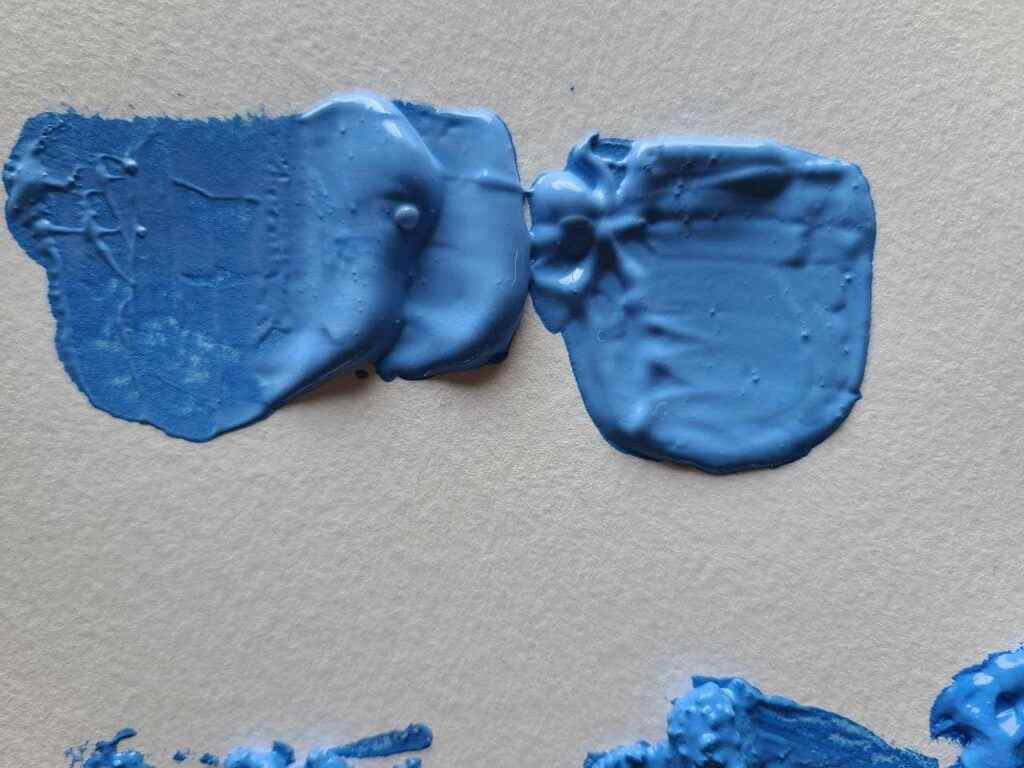
- Modeling paste is what I use to add thickness to my acrylics. I use Amsterdam modeling paste ( I buy 1 L and it lasts me a long time), but you can choose any other. It is white and looks very similar to gesso but is much thicker. The optimal ratio is 1 part modeling paste to 4 parts acrylic paint
- The modeling clay is a thick white viscous paste made with acrylic polymer emulsion and marble dust that you can mold to create your desired texture. You can shape the clay directly on the canvas and paint it with acrylics or mix the two.
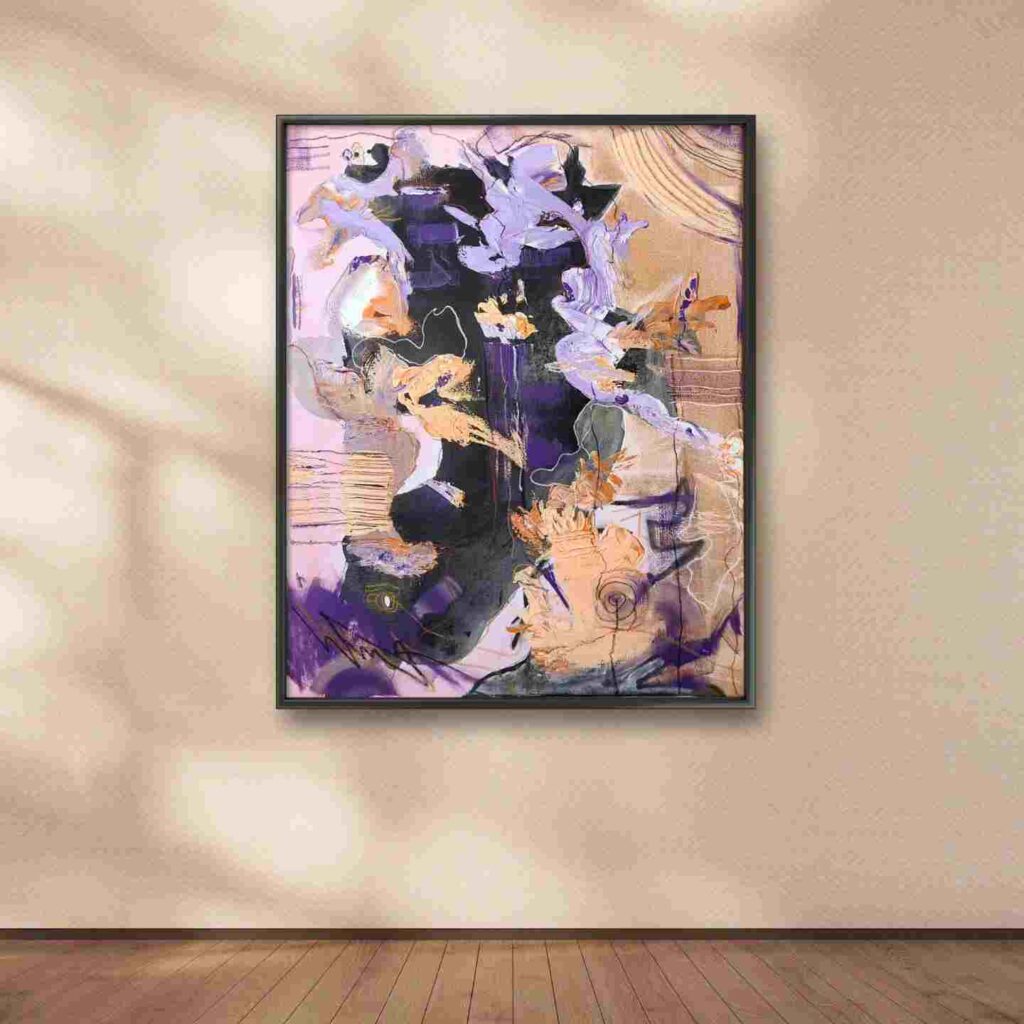
- Many artists have used spackling paste as an inexpensive alternative to modeling paste as an acrylic paint thickener. However, I think it shrinks, changes color, and can crack.
- A textured acrylic gel medium is an alternative to basic sand. It is a professional gel that is made of paste and white-filtered sand. You mix it directly with paint and use it on canvas. This is a “cleaner” option than just bringing sand from the beach.
Some downsides of using mediums to make acrylic thicker:
- Modeling paste is the fact that it can reduce the vibrancy of the paint color.
- Gel medium is the fact that it tends to shrink when it dries.
- Applying too much gel medium can make the paint lumpy.
- Almost all mediums will extend drying time. This means more chances of dust and hairs settling on the painting or cracks from uneven drying time.
- Gesso significantly lightens the color!
FAQ
Why is my acrylic paint so thin?
Your acrylic paint is probably thin because of how it was manufactured. Less pigment and filler were used to make craft or cheap acrylic paint. Fluid and pour paints are also usually thinner than regular acrylic paint.
If you have problems with watery paint, you can give this article a read.
How do I make cheap paint thicker?
Cheap paints usually have a thin consistency, they would need to be thickened if you want to do a textured painting. Add acrylic gel, or modeling paste, or make a DIY thickener with glue, flour and cornstarch.
Conclusion
Don’t throw away good paint just because it has a thin consistency. You can still remedy the situation by thickening it.
There are thickening agents that you can buy such as modeling pastes and acrylic gels. They are however pricey.
You also have the option to make your own DIY acrylic paint thickeners using household items like flour and cornstarch.
As I said my favorite ways to add some texture and uniqueness to my abstract art are to mix in modeling pastes, matte gels, gesso, or regular sand!
Have you tried any of these methods?
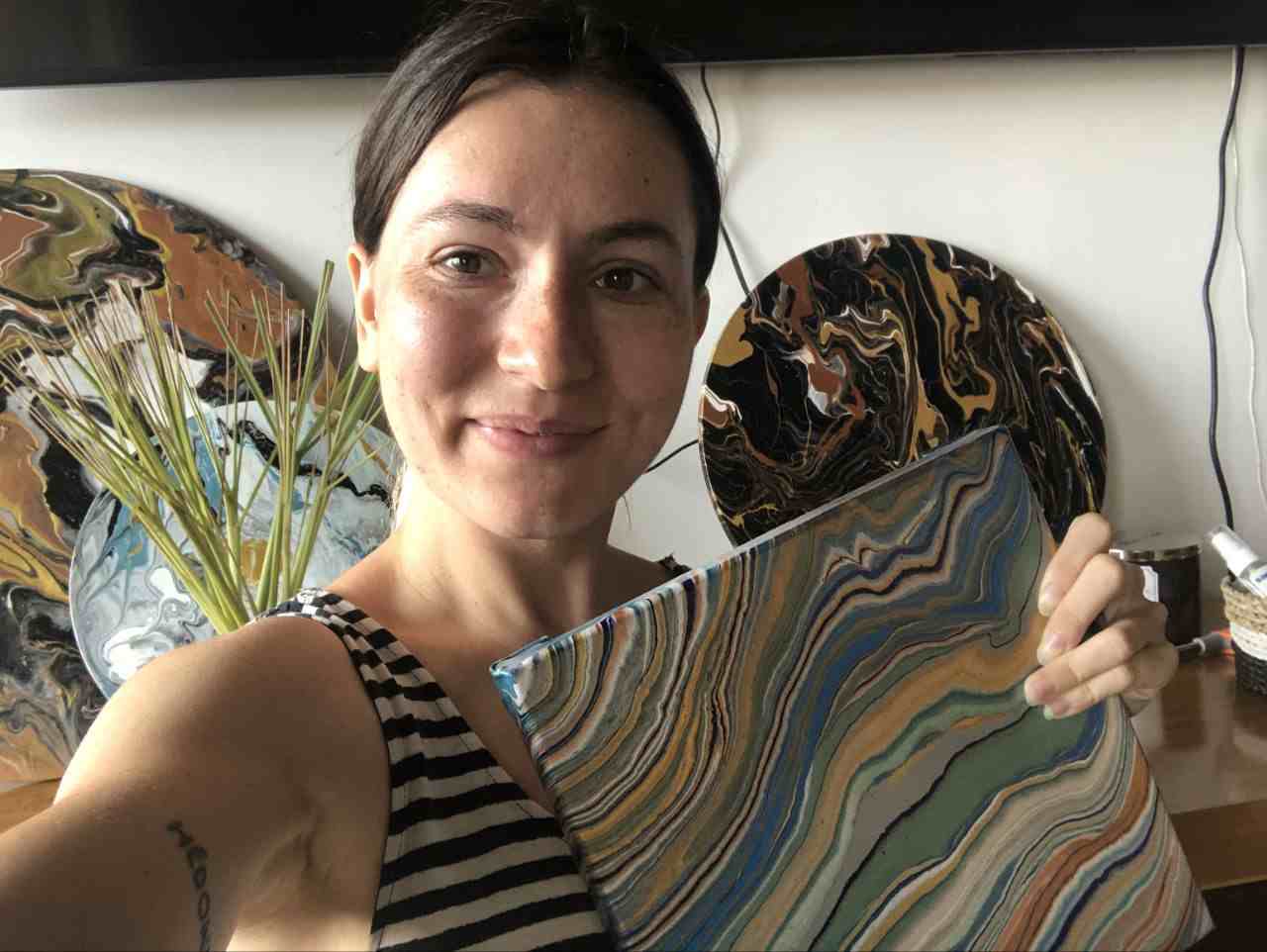
Masha Eretnova, born in 1991, is a Buenos Aires-based certified teacher, artist, and member of the Professional Artist Association with 20+ years of personal painting journey.
She started painting and drawing very early and is now an international abstract artist and educator passionate about acrylic painting, gouache, and crafts.
Her works are part of international exhibitions and contests, including ArtlyMix (Brazil), Al-Tiba 9 (Spain), Exhibizone (Canada), Italy, and many more.
Besides her artistic pursuits, Masha holds a post-grad diploma in Teaching Film Photography and 2 music school diplomas: piano and opera singing.
